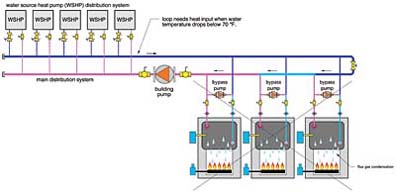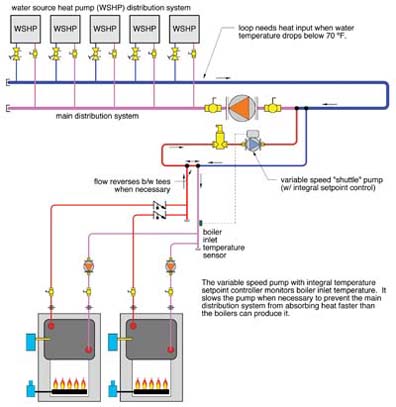A few years ago I had an opportunity to visit the "bone yard"
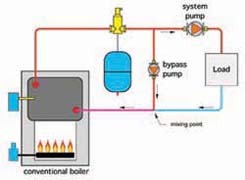
Thermal Sledge Hammer
Thermal shock occurs when a significant mass of cool water enters a hot boiler. A common scenario is when a boiler that's up to temperature while service a load receives an inrush of cool water as another zone circuit turns on. The rapid change in water temperature sets up a high temperature gradient across the heat exchanger. The large temperature difference in combination with the rate of heat diffusion through the metal creates high stresses. High enough, in some cases, to crack cast iron or significantly distort ductile metals such as steel and copper. Descriptions of the sounds associated with thermal stock range from: "It sounded like a bottle rocket"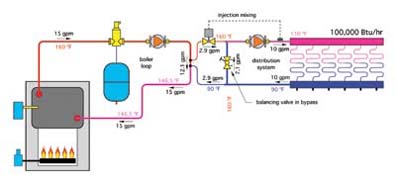
Limited Protection
Take a look at Figure 1, it shows a bypass pump set up to mix some of the "hot"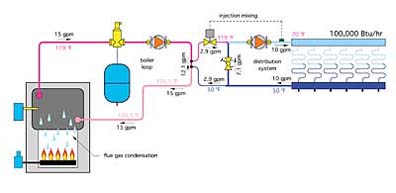
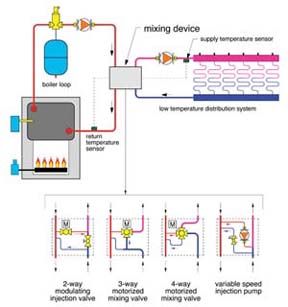
If You Can't See It, You Can't Control It
The only way to ensure that a conventional boiler is protected against sustained flue gas condensation is to use a mixing assembly that measures boiler temperature and reduces "hot"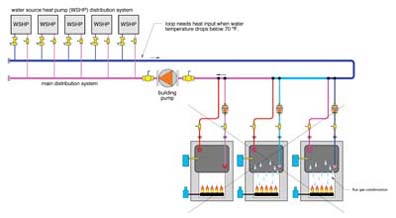
Some Real Life Examples
Figure 5 shows a commercial water source heat pump system that uses conventional gas-fired boilers for supplemental heat. The boilers come online when the temperature of the building loop drops below 70ºF. This system does not sense boiler inlet temperature, nor does it have a "thermal clutch"